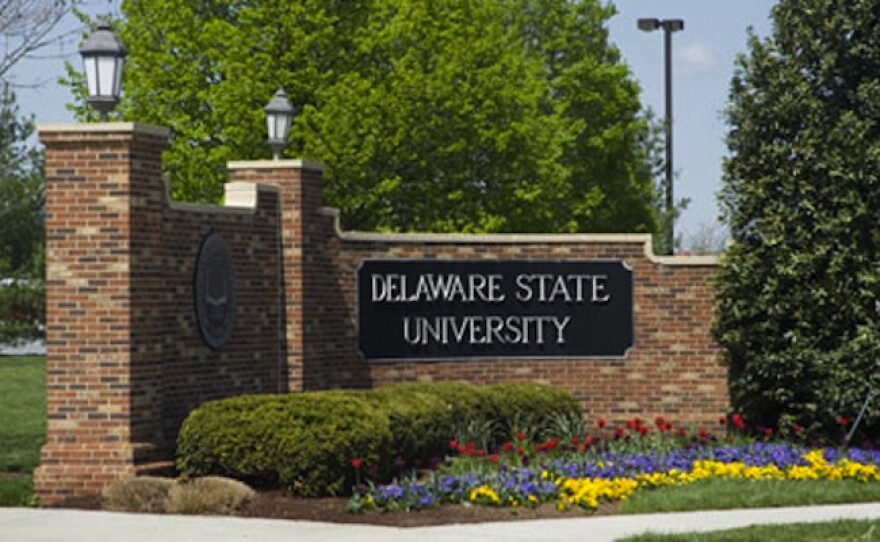Oprah Winfrey, Spike Lee, and author Toni Morrison are among the alumni of America’s National Historically Black Colleges and Universities. On Monday, President Barack Obama issued a proclamation highlighting the contributions graduates of HBCU’s have made to the nation.
This year, National Historically Black Colleges and Universities Week coincides with the 125th anniversary of the second Morrill Act. That legislation required each state to show that race was not an admissions criterion, or else to designate a separate land-grant institution for persons of color.
Founded in 1891 as the State College for Colored Students, Delaware State University is one of the country’s oldest HBCU’s.
America’s historically black colleges and universities can trace their roots to the first Morrill Act. Signed into law in 1862 by then President Abraham Lincoln, the legislation granted each eligible state federal land to be used for the purpose of creating land-grant colleges. But as Delaware State University spokesman and HBCU historian Carlos Holmes explains, the civil war era act wasn’t designed to benefit African Americans.
“The Morrill Act of 1862 had very little to do with black folks,” he says. “We were still in the middle of slavery at the time but later on there was a Morrill Act of 1890 and to get funding for that you had to either allow blacks, then known as negroes, to enroll in your institution of higher education or you had to establish a separate institution of higher education. Even though it was before the Supreme Court ruling concerning separate but equal, the mindset was there; to separate the races and certainly that was prevalent in Delaware.”
Until 1954 and the U.S. Supreme Court decision in Brown vs. Board of Education which ended separate but equal school systems, HBCUs were the principal option for blacks interested in attending college. But by the end of the sixties,students who could now attend predominantly white institutions of higher education began doing so in greater numbers and HBCU enrollment started to decline.
“There are 105 such institutions today,” says Holmes of America’s remaining historically black colleges and universities. “Some of those HBCU’s are struggling. You read about certain HBCU’s and you don’t know if they are going to be here in five years.”
There is some debate over what the driving force will be behind the survival and success of today’s HBCU’s. During a recent convocation ceremony at Florida A&M University in Tallahassee, its president acknowledged that many HBCU’s are fighting to prove their relevance. Opponents to HBCUs claim the institutions create a divide or serve as tools of self-inflicted segregation. It’s a view Holmes isn’t buying into.
“I’ve heard the arguments and they really don’t carry much water,” he says. “Anybody that understands HBCU’s, anybody that understands higher education, understands the great value of historically black colleges and universities. We provide an education here that is not unlike a lot of the majority institutions but at the same time our legacy is to provide access.”
HBCU advocates say that commitment to access remains relevant for disadvantaged students of any color. Many schools are actively courting low-income students of all races, a need Delaware Senator Chris Coons says HBCUs are stepping up to meet.
“Delaware State like many similar institutions is an affordable, accessible university that pursues academic excellence and access to opportunity for many students who are the first in their families to go to college,” he says. “I think if we are going to have an American dream that is vibrant, that’s real, we have to have affordable and accessible higher education.”
Today, Delaware State University features a near 70 percent African-American enrollment with an increasing number of Caucasian, Hispanic, and international students.
And even though HBCUs remain at the lower end of the scale when it comes to the costs of tuition, supporters say they will have to offer more than affordability to compete with mainstream institutions. Holmes thinks one of the reasons DSU is in a better position than some, is the institution's forward thinking in carving out a niche. In Delaware State’s case, that would be in the area of research.
“I think that we have often thought outside of the HBCU box,” says Holmes. “Because we had the infrastructure for scientific research, we put ourselves in a position to start getting those research grants from the National Science Foundation and the National Institute of Health, that range from hundreds of thousands of dollars to millions of dollars.”
This week, DSU announced that the National Science Foundation has awarded the school a 400 thousand dollar grant to support the Cyber Infused Mathematics Initiative and the U.S Dept of Education said Delaware State will receive 2.6 million dollars under the “First in the World” grant program.
The money will be used to increase the applications, enrollment and retention in postsecondary education of at-risk and underrepresented students from low income families who would be first generation college graduates.
Senator Chris Coons says Congress must continue to look at more ways to make colleges and universities affordable.
“Having a college degree is a key gateway through which you have to pass if you’re going have a middle class or upper middle class life,” he notes. “Delaware State is doing some terrific things,” he adds. “It is a steadily rising, steadily improving university that I think has really made its mark here in Delaware and has a great deal to contribute to our future.”



